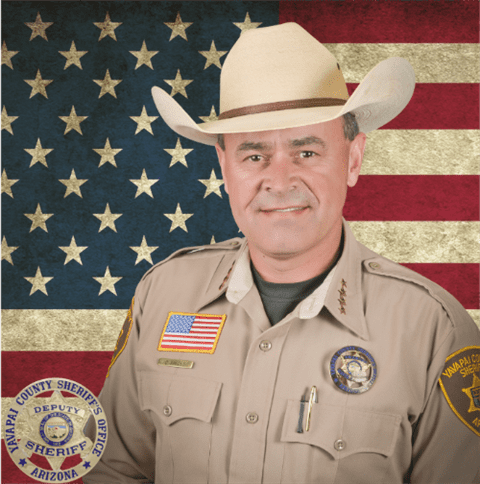OHVs on Public Land
This is the third part of a four-part series on the recent meeting of the Yavapai Cattle Growers’ Association.
The second half of the Yavapai Cattle Growers’ Association meeting with U.S. Forest Service chief Randy Moore and several other stakeholders dealt with the effects of OHVs on rangelands within the Prescott National Forest and the Coconino National Forest in areas west of Sedona.
This section of the meeting also focused more on the county government. Public lands make up the majority of the 8,125 square miles of Yavapai County, which also provides emergency dispatch services for the Forest Service.
“Right now, in our national forests, if you call 911, you’re not getting Game and Fish, you’re not getting the Forest Service, but you’re getting our county resources, our sheriff’s office responding to those calls for service,” said James Gregory, Yavapai County District 2 supervisor and board chairman.
He then yielded his time to Yavapai County Sheriff David Rhodes, who was not listed on the agenda “to discuss some of the law enforcement issues we’re having in our forests and resource protection when we talk about OHV property damage to our stock tanks and different things like that. We need more enforcement in our forests.”

Rhodes said that he saw the role of the sheriff on public lands as being multifaceted, covering search and rescue, OHV issues and damage to public and private property. “Every time somebody picks up the phone, they dial 911. It rings, it comes to the local agencies,” he said.
He had two requests for Moore.
“If there’s going to be changes to the rules, travel management, range management, whatever, if it is going to impact public safety, we want to sit at the table before the public comment period,” Rhodes said. “We don’t want to have a 100-page document dumped on us to read in a week and decipher and understand what’s going on. We want to be a part of the discussion before that.”
“The second is this: The Forest Service provides a cooperative agreement to the sheriffs all across the West and they pay a little bit of money in exchange for services … Here in Yavapai County, we dispatch for the Forest Service law enforcement officers, we let them in our records management system, we take calls at the campgrounds …
“But those contracts haven’t increased in 25 years. It’s a tiny amount of money for the amount of work that has been done on the forest by the sheriff’s deputies. We believe, and I know I speak for all the Western sheriffs and certainly the sheriffs in Arizona, that now is the time to increase the funding for local law enforcement working on public lands in this cooperative agreement.”
Rhodes is also the president of the Arizona Sheriffs’ Association.
YCSO did not provide an estimate of what it may spend responding to OHV-related calls by press time.
“It’s definitely something to take a look at,” U.S. Rep. Eli Crane [R-District 2] said. He then referred to fellow attendee Rep. Paul Gosar [R-District 9] and said “But as you probably know, when we get back to Washington next week, actually, we’re looking at trying to get our federal house in order, our fiscal house in order, about $32 trillion in debt, going to be about $36 trillion in debt come January 2025, and there’s no real appetite to stop spending money we don’t have up there. That’s always the issue. You’ve got a bunch of things that need funding. But you’ve got a government that has no desire to stop spending money we don’t have and so it creates a real issue for many of us, but Sheriff Rhodes made a good point, and it’s definitely something we can look into.”
The HEARD Act called for the sale “of federal lands not being utilized by public land management agencies that have been identified for disposal,” as Gosar stated in a 2016 press release.
Event moderator Andy Groseta also voiced his support for Gosar’s proposed sale of public lands both



